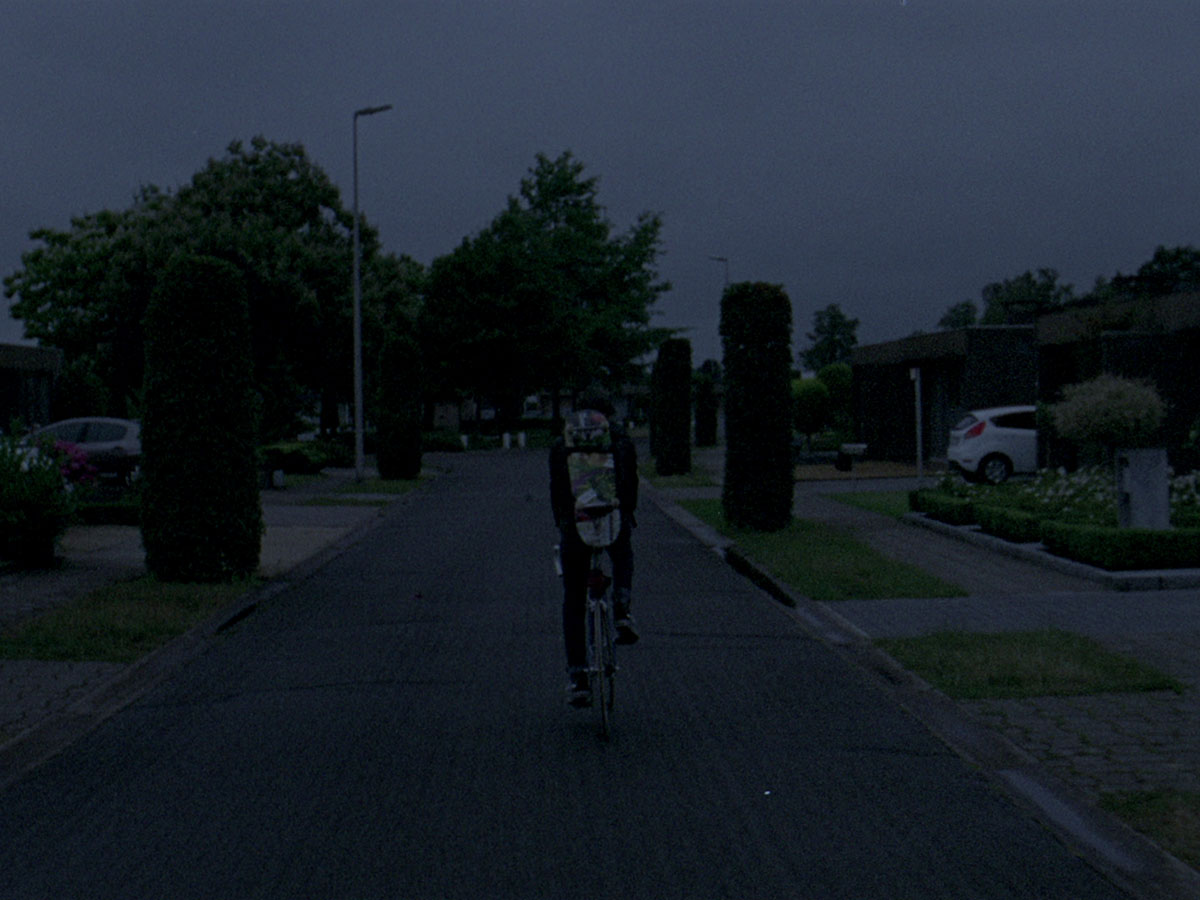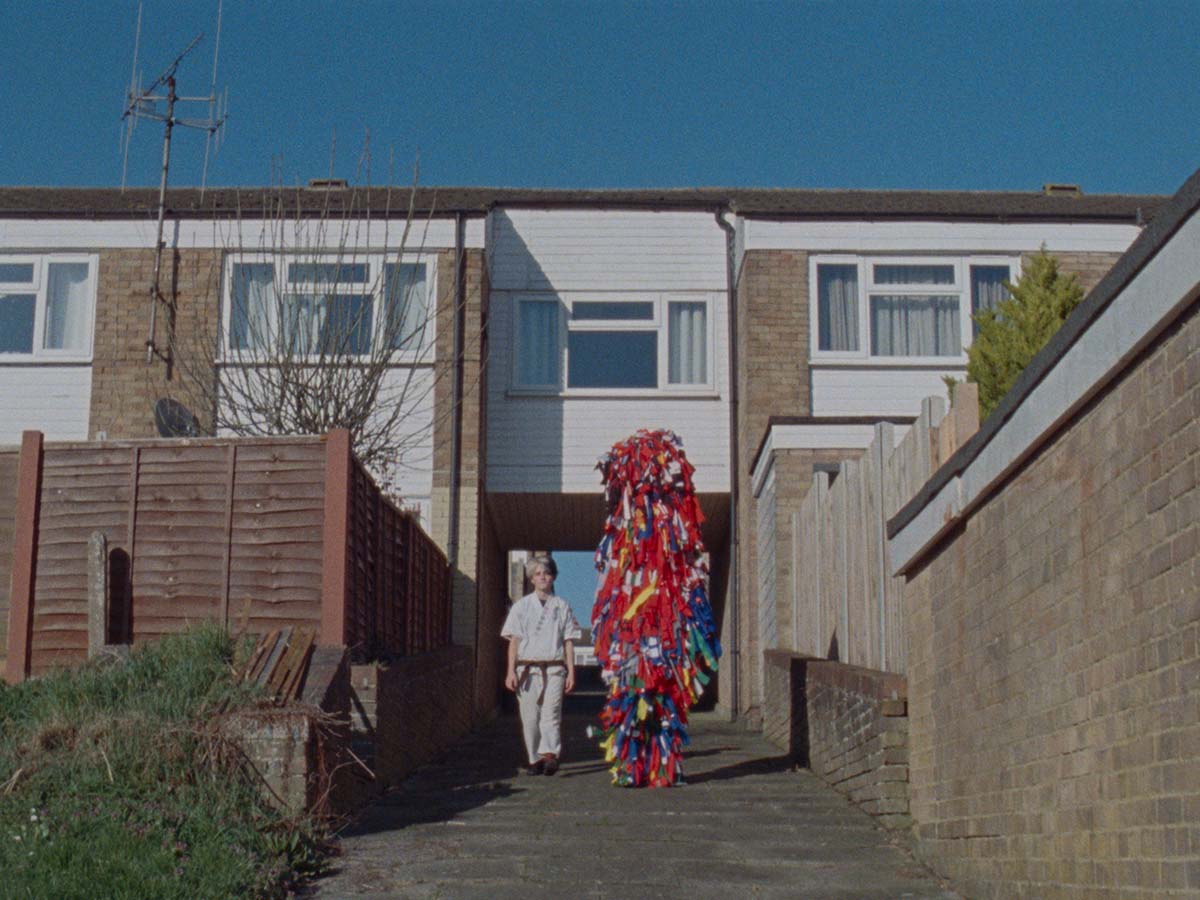
All We Ever Wanted Was Everything
A portrait of young skateboarders growing up in a Flemish suburban town. We meet different characters going through their daily routines: riding around on their skateboards, waiting, hanging out, daydreaming... They fantasize about going away, but wouldn’t know where to. The images on their TV screens serve as a gateway, just like the posters on their bedroom walls. The film is a personal retrospect on adolescence, told through accidental encounters, trivial moments and reenactments of memories.
Those moments between a first date and kiss, between a goodbye and a funeral, between a final exam and a proclamation are seemingly empty. With All We Ever Wanted Was Everything, Enzo Smits zooms in on this idea. What he finds is a beauty that is not easily discovered. Rather than a clear narrative structure, Smits’ debut film presents itself as a stream of impressions. A group of friends pass time together. They talk, walk, and play video games. They stare into nothingness and wander off. What are they waiting for? The first days of school? A taxi? The dawn of their adulthood? In the background, a clock is ticking while one of the boys prepares a cup of tea. Time is slipping by, but nobody’s in a hurry. Growing up is a lesson in patience.
Smits consciously shows these ‘dead’ moments. With this, he seems to fulfill Cesare Zavattini’s ultimate dream, according to André Bazin. The Italian filmmaker Zavattini made a name for himself in the 50s and 60s with his surprisingly empty films. He dreamt of “making a ninety-minute-long film about a man’s life where absolutely nothing happens.” 1 Zavattini believed cinema sells her soul when it fictionalises reality. Beauty is not to be found in big moments but rather somewhere in between. Time and time again, Smits diverts the attention to the temps morts, to everyday moments that at first glance seem meaningless. Two friends are standing next to a tree; they stare into the distance. A group of skaters are walking towards the horizon. A teenager, while gaming, is staring at his TV. Smits strings together these tableaux from day-to-day life, resisting the temptation of embellishing them with surprising plot twists, predetermined framing, or catchy one-liners. In doing so, he emphasises what Zavattini called “the banalities of everyday life.” These moments, he writes, are big not because of “their extraordinary qualities, but because of their ordinary qualities.” 2
With All We Ever Wanted Was Everything, Smits reintroduces us to our daily surroundings, to things that no longer catch our eye. In this act of really looking at what surrounds us, we finally see the beauty of it. Cinema, memetic in its essence, is the perfect medium to confront us with a reality we claim to know. Smits forces our gaze to land on what we prefer to overlook. The ordinary becomes extraordinary; banalities become spectacular. Carefully he chips away at the layers of his film until an associative collage of images remains. However contradictory it might sound, it is exactly this erasure that adds meaning. An absence so noticeable it becomes a presence. In All We Ever Wanted Was Everything, skating takes on that role of absent presence.
Smits’ film is not a skate film in the likes of Gus van Sants’ Paranoid Park or Paul Brown and Alan Sacks’ Trashin’ with their lyrical camera, swinging and swirling to capture all the tricks. The act of skating is hardly featured here. We see people looking at skaters, skaters riding their bikes with boards on their backs, skaters watching skate videos. Smits never shows the boys boasting confidently, riding their boards, and displaying their coolest tricks. He doesn’t have to. These types of images are fully unnecessary. Because every image carries the distinct echo of that activity the teenagers seemingly, practice every day. Every image shows traces of that other image that ends up never being shown. In this way, Smits plays an ingenious, postmodern game of meaning. As Derrida stated, towards the end of the seventies, every concept always carries that which it is not. It reminds us of what is absent.
Around the same decade as Derrida’s statement, the skateboard symbolized the youth revolting against the dominant culture. A culture with dogmatic distinctions between useful pastime and waste of time, high and low art, Olympic sport, and mere movement. The skateboard signifies a quest for freedom and recognition. All We Ever Wanted Was Everything evokes these connotations without ever showing the act of skating itself. Smits captures liminal spaces where the focal point is absent and seemingly irrelevant things are present. This emptiness depicts not only beauty but also meaning.
Portrait of a young teenager with mental health issues who is passionate about karate. They wander around a housing estate in East Kent, locked in verbal and physical battles with a hallucinatory demon.



